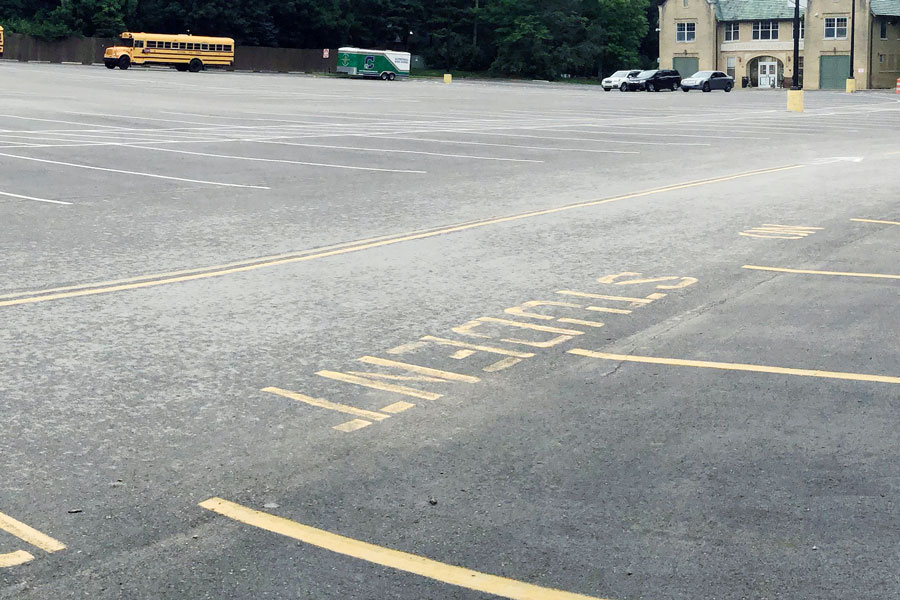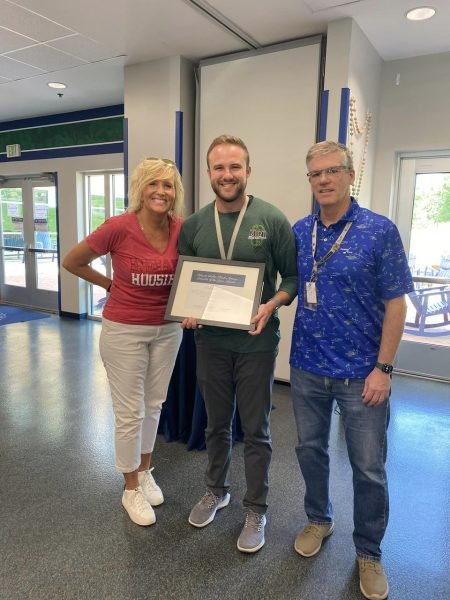Transportation director, instructor offer driving tips
Winter weather brings safety challenges
The junior lot may be completely clear now, but it won’t be long before ice and snow on this lot and surrounding streets are covered with ice and snow, which create challenges for new drivers.
As she turned her vehicle onto campus one winter morning last year, senior Grace Jarrett’s car slid on ice. As she gripped the steering wheel, she swerved out of the way of the car in front of her before slamming on her brakes.
Just when she thought she had avoided an accident, a car behind her slid as well and rear ended her.
Accidents like this happen to teen drivers all of the time due to winter weather conditions. These conditions can include high winds, snow, ice, black ice and sleet. All of these reduce the friction between tires and the road, which increases the chances of sliding.
One of the most dangerous road conditions is black ice. It occurs when the temperature drops to 30 degrees or below. Driver education instructor Mr. Dustin Land says black ice forms when a thin layer of water vapor freezes on the road and gets really slippery. It is most commonly found on bridges and overpasses. The worst thing about black ice is that it is very hard to see. Drivers must be prepared at all times for black ice so they are not taken by surprise.
In order to prepare vehicles for these winter weather conditions, maintenance plays a crucial role in staying safe. Land suggests going to get fluids and tires checked. He also recommends decreasing the pressure in tires, which increases the friction between tires and the road and decreases the chances of sliding. Land recommends having an extra jacket, gloves and blanket in the car in case of car trouble or an accident.
Transportation director Mr. Greg Bamrick also suggests always keeping at least a half tank of gas in the car for these situations as well.
It may be a good idea for new drivers to practice in parking lots under winter conditions before they attempt to drive on the road. Students should always check emails for updates on potential two-hour delays or cancellations.
When actually faced with having to drive in potentially hazardous conditions, drivers should allow for extra time to start their cars to make sure windshields, windows, and mirrors are defrosted. Headlights and taillights should also be free of snow and ice so that the lights can be seen by other cars. When visibility is low due to sleet or snow, headlights and potentially hazards should be on as an additional safety precaution.
Reviewing helpful driving tips is another smart way to stay safe on the road. Some of these tips include having two hands on the wheel, focusing on what is ahead and checking mirrors. The most important, however, are reducing speed and keeping a safe following distance.
Speeding is a common habit of many drivers, especially teenagers. As roads start to become slick, it is key to reduce speeds. If there is snow on the ground, drivers should slow down at least 10 miles per hour below the speed limit. If there is ice, drivers should reduce to 20 mph below the speed limit.
Keeping a good following distance is another smart tactic for drivers to do. By leaving extra room in front of you, you are buying yourself more time to react if something goes wrong. Bamrick says that you should always keep a long distance between you and the car in front of you, but in the winter months you should increase that distance by at least two car lengths.
As roads become hazardous, it becomes more crucial for teenagers to limit distractions when on the road. Bamrick says distracted driving is one of the leading causes of accidents. Almost anything can be a distraction, but cell phones, the radio and other passengers are the most common.
Bamrick said if teenagers limit distractions as well as use these good driving practices, they will be far less likely to experience a car accident this winter.







